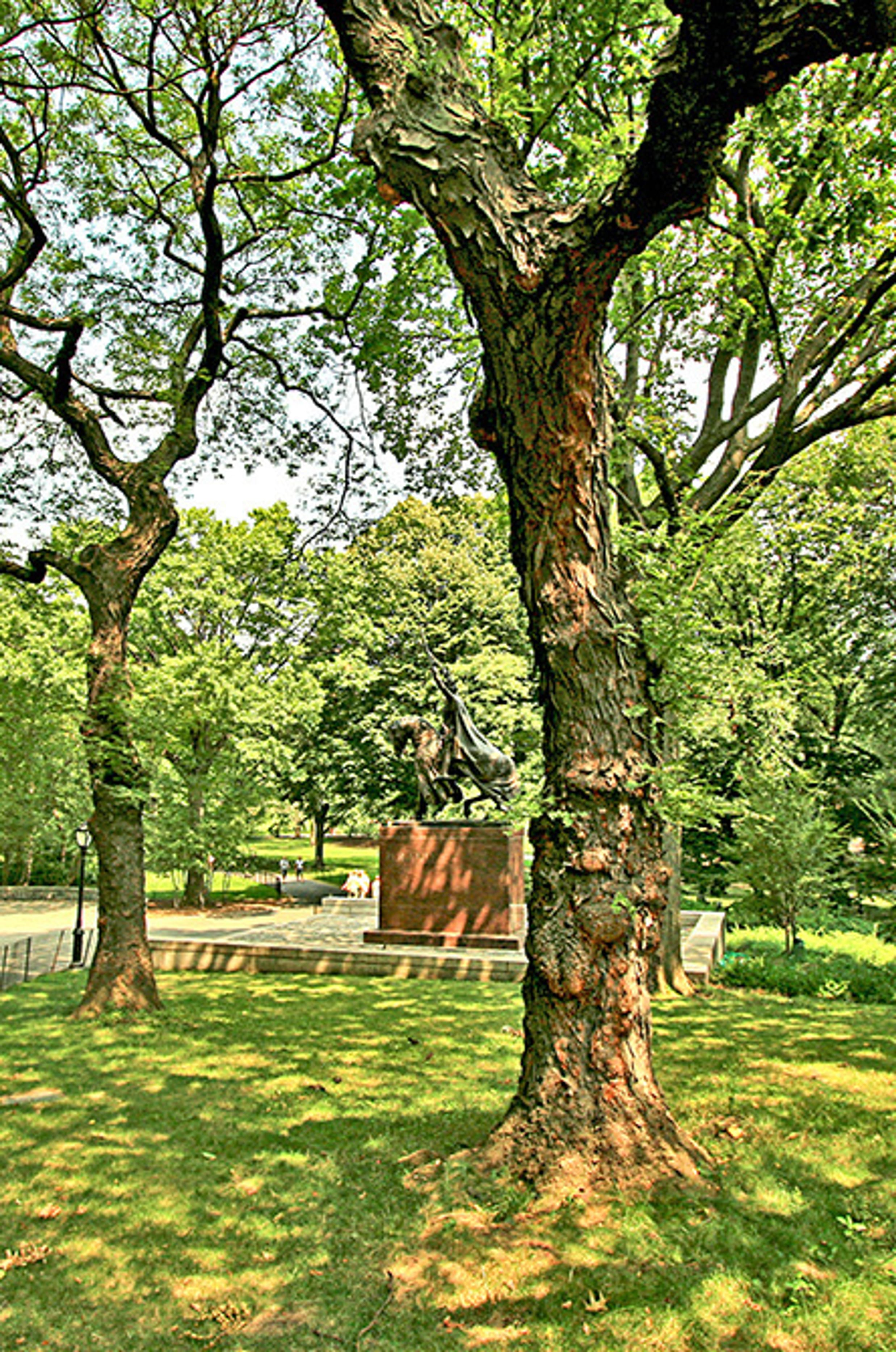Honey Locust

Honey locusts are part of the bean family fabaceae. As such, they produce long seed pods full of bean-like seeds. The pods contains a sweet pulp that makes them a favorite food of deer and cattle. These seed pods might've at one time been eaten by North America's now-extinct megafauna like giant sloths and mastodons. The honey locust has large thorns protruding from its bark and displays fragrant yellow flowers in spring. Its fall color adds to the changing seasonal landscape in Central Park with beautiful shades of yellow.
-

Leaves
Compound or doubly compound leaves; odd rows of leaflets; lance-shaped and blunt; yellow in fall -

Fruit
12 inches or more, elongated pod, brown or purple -

Flower
Yellow, fragrant in spring -

Bark
Smooth; tan-olive to gray-olive; many raised pores for gas exchange when young; later becomes deeply fissured, forming flared gray plates with orange interior bark; usually displays large branched thorns on trunk







